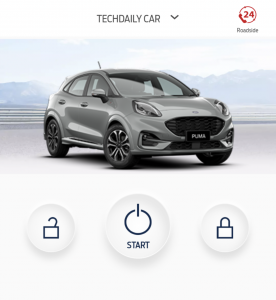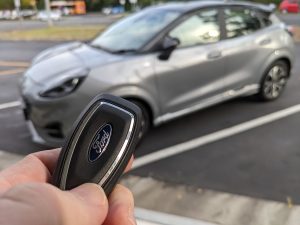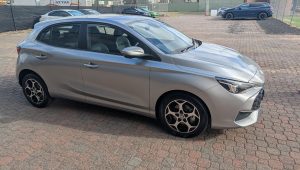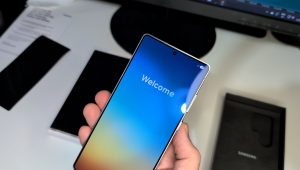 You’re probably seen movies or future gazing videos where our roads are filled with self-driving vehicles. Well we’re not there yet but the latest vehicles are still pretty smart.
You’re probably seen movies or future gazing videos where our roads are filled with self-driving vehicles. Well we’re not there yet but the latest vehicles are still pretty smart.
Jump into just about any late model car and you’ll find a host of high tech features designed to make driving easier, safer and more enjoyable. The kind of features notably absent from my 2003 Nissan Tiida. That’s right, not every Tech journalist actually owns the latest tech, but at least some of us get to test drive it.
Speaking of which I recently had the pleasure of driving the new Ford Puma, specifically for the purpose of investigating its connected features.
I discovered through an earlier conversation with a Ford representative that last year Ford became the first carmaker in Australia to have modems in all vehicles. That’s right, somewhere in the car there’s a modem that’s connected to a mobile network, so these vehicles are truly online. But why does my car need this sort of connectivity?
At this stage you could easily argue that some of the connected functions are more of a ‘nice to have’ than a ‘need’ but possibly the sort of feature that you’d miss if it wasn’t in your next car.
So what can you do with one of Ford’s connected vehicles?
 All Ford vehicles, including the Puma, that have the embedded modem can be accessed via the Ford Pass app on your smartphone. From here you have access to some functions and data from the car such as;
All Ford vehicles, including the Puma, that have the embedded modem can be accessed via the Ford Pass app on your smartphone. From here you have access to some functions and data from the car such as;
Remote Start
Lock/Unlock Doors
Tyre Pressure readings
Odometer reading
Fuel Capacity
Location of the vehicle
I did wonder why I might want to start my vehicle remotely or even lock or unlock the doors this way, but there are definitely some situations that come to mind where it could be very handy. Say you parked at the airport and took a flight to another city and then wondered if you locked the car. Easy, open up the app and lock the vehicle remotely. On a hot or cold day remote starting the vehicle will turn the air conditioning to the last used setting so when you get in it will be much more comfortable. I can see this being really great in summer.
The Ford Puma is well connected but it’s also fun to drive.
Even before investigating any of the more high-tech features for driving I was surprised to find that the 1.0 litre, 3-cylinder engine was very responsive and well suited to both around town and freeway driving. For a small car (marketed as a compact SUV) and front wheel drive the Puma felt reassuringly solid and well connected to the road at all times. The front seats are quite sporty in design and quite comfortable to sit in for a few hours at a time.
When it comes to the other in-car tech, the Puma also has plenty to offer.
Wireless charging is another one of those features you didn’t know you needed until you have it, and my Google Pixel 5 connected up nicely with the vehicle supporting Android Auto so my daughter could request songs from Spotify to blast through the 6-speakers in the car.
If you have a late model vehicle you may already take for granted various driver assist features but coming from a vehicle that had none they were a very welcome change and left me wondering how anyone could ever get booked for speeding. Adaptive cruise control is simply brilliant but also the speed ‘limit’ feature where the vehicle does a great job of making sure you don’t go faster than you’re supposed to. I’m pretty great at parking so park assist was more of a novelty for me however back on the cruise control side of things I do love the lane guidance assistance to help keep you stay on track on longer drives.
So my overall verdict will come as no surprise. The Ford Puma is fun to drive and packed with some really great connected features that you think you don’t need but won’t be able to go without once you’ve used them.



